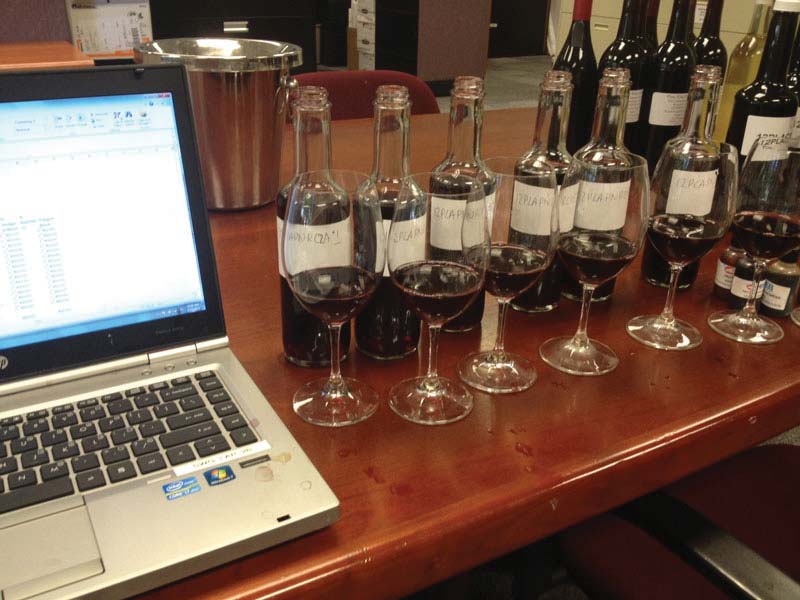I think that’s a pretty cool idea! How many of us are lucky enough to hang out with such an obviously collaboratively minded group of folks? And, though it may seem daunting, there’s nothing like jumping in and getting started. At the very least you’ll learn something going through the process yourself and I’m sure you’ll learn a lot from your fellow winemaking club team members! Here are some of my top pieces of blending advice:
• Work Small: My first piece of advice is definitely not to do your trial blends in quantities more than 50 mLs! You’ve only got a small amount of wine to work with so you need to keep your samples very small. This means that you’ll have to be working in really tiny volumes. Can you get a 5-mL pipette (or even a 1-mL?), which would mean you can work in smaller quantities and save wine as you go along? For just one person, for beginning tastes, you really only need 25 mLs.

• Make a spreadsheet: Don’t just randomly toss bits of wine here and there. You’ve only got a little bit of wine so you don’t want to waste it. What I like to do is make a spreadsheet where I list all of the components down the left-hand side and then next to them list the # of mLs/25 mLs (if you can go that small) and then next to that calculate the percentage that each component is in the total blend. Cut and paste that mini-calculator for every iteration of the blend you do and label each one A, B, C and so on. That way you’ll have a track record of what works and what doesn’t.
• Be aware of what every wine brings to the party: Taste and evaluate a small amount of each of your blending components on their own and assess what their strengths and weaknesses are. Are there any holes/are they missing something? Does the Petite Sirah bring the fruit whereas the Cabernet is the structure hero? What about the Merlot? Don’t be afraid to not use a component if it doesn’t bring anything to the party.
• Think about filling the holes: Start mixing and matching to make a “complete” wine without any holes, i.e., pair that fruit-bomb Petite Sirah with some Cab for structure, then some Merlot for body . . . and a little something else if it’s really oaky . . . you get the idea. See if you can line up the positive attributes to make a satisfying whole wine without letting anyone’s possible negative sides stick out. Work iteratively — that is, add a little bit of something to see if it makes your blend better. If it doesn’t, use less, or don’t use any at all.
• Think about finishing tannins and other products: Most of the big commercial wine-supply companies are selling these new and innovative liquid and powdered finishing tannin products. They can be used in the last month or two before bottling and can really improve a wine’s oakiness, finish, or mouthfeel. I think every home winemaker should have a small selection of these dropper bottles and powders to trial — they can make all the difference in filling in holes if you happen to find one in a blend.
• Never blend a loser: My long-term readers know that this is one of my mantras. Never force that square peg into a round hole or give that high-VA (volatile acidity) Zinfandel a home in a final blend just because you feel bad for it. Since this is a contest, if there’s something you don’t like, don’t feel like you have to use it. Do be aware, however, that in blends sometimes tiny amounts of “flaws” really do help an overall blend. VA is one of these things; sometimes a small amount of a high-VA lot can really elevate the fruit. Just be sure to filter the final blend in the cellar because you don’t want to spread around that bacteria that’s causing the high-VA issues.
I hope this helps and I hope you have enough wine to play around with! Also, I hope you have fun experimenting; learning is what blending is all about and once you start doing it I’m sure your confidence will improve for each subsequent blend.





